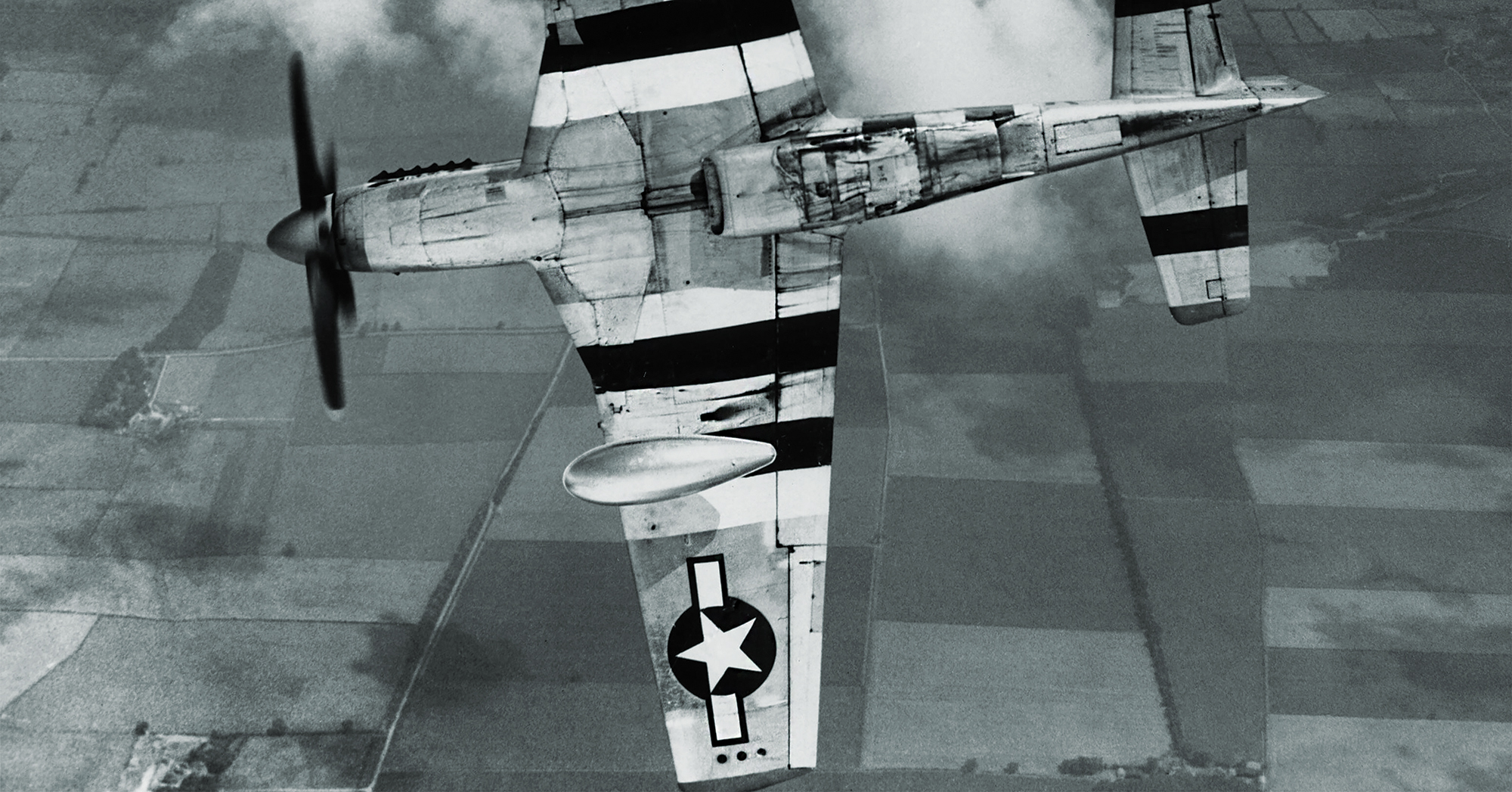This was it: D-Day, June 6, 1944. After long months of planning, preparation and perspiration the Allies were finally ready to breach the Atlantic Wall and push back the dreaded Nazi war machine as part of Operation Overlord, the invasion of Normandy, France.
In the predawn darkness U.S. Army Air Forces Capt. Clarence E. “Bud” Anderson strode to his North American P-51D Mustang parked beside the runway at RAF Leiston in Suffolk. His 375th Fighter Group was to support the amphibious landings by patrolling a protective sector some miles inland. No German planes would be allowed to pass.
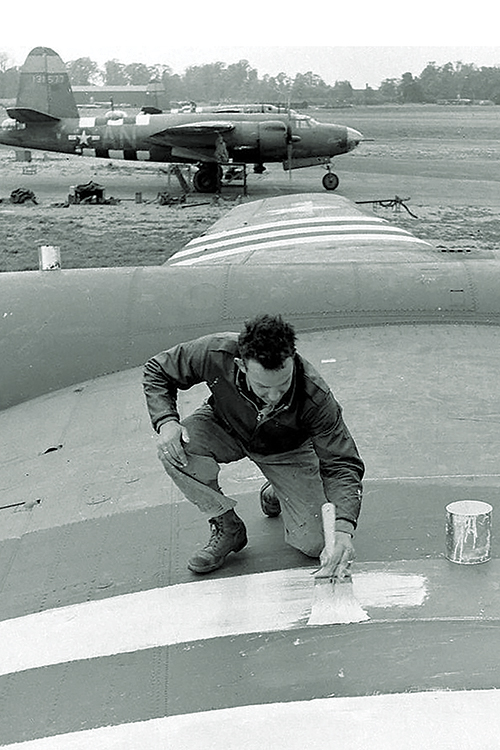
Despite the inky black of a moonless night, Capt. Anderson could see something was different with his fighter, named Old Crow after a favorite brand of bourbon whiskey. He’d been told ground crews would repaint all aircraft overnight with special markings to avoid friendly fire. And there they were—as big and bold as anything he’d ever seen. Alternating 18-inch-wide bands of three white and two black stripes stood out like beacons around each wing and the fuselage aft of the cockpit.
“I couldn’t believe how big they were,” Anderson, a retired Air Force colonel, recalled in a recent interview.
As the 5,000-ship armada readied to sail, Allied military authorities locked down air bases across Britain, and ground crews began the daunting task of painting thousands of warplanes with the black-and-white recognition markings, dubbed “invasion stripes.” All single- and twin-engine fighters, medium and light bombers, transports and reconnaissance aircraft, as well as some special duty planes, received the markings. Among the few exempt plane types were four-engine heavy bombers; the Germans flew few such bombers, so there was little chance of mistaking them.
The reason for the garish markings was simple: to prevent unnecessary losses due to friendly fire. The Supreme Headquarters Allied Expeditionary Forces (SHAEF) wanted to lessen the chances British and American ground and naval anti-aircraft gunners along the Normandy coast would mistake their own aircraft for enemy planes and shoot them down.
D-Day planners were extremely concerned about friendly fire incidents—and with good cause. During the July 1943 Sicily invasion Maj. Gen. Matt Ridgway’s 82nd Airborne Division and the 52nd Troop Carrier Wing suffered hundreds of casualties when ground and naval forces opened up on Douglas C-47 Skytrain and C-53 Skytrooper transports as they attempted to drop paratroopers on strategically important zones. On that occasion Ridgway and his superior, Lt. Gen. George S. Patton, waiting at an American-held airfield for the paratroopers’ arrival, could only watch in shocked horror as their own troops opened fire on the transports, shooting down 23 planes and killing 141 men.
Without coordinated control and effective communications, friendly aircraft could easily be mistaken for enemy planes by gunners on the ground or at sea, especially amid the chaos of active combat
Preventing one’s own forces from accidentally killing each other has been a concern since human beings first met on the battlefield. Amicicide, or friendly fire, has taken untold lives over the millennia. From the ancient Greeks at Epipolae to Stonewall Jackson at Chancellorsville to Pat Tillman in Afghanistan, the confusion and misjudgment that accompanies the fog of war has resulted in self-inflicted casualties. The advent of modern technology has only increased the frequency and scale of killing.
During World War II there was particular concern over avoiding friendly fire incidents with aircraft. Battlefield tactics had changed, and planes often flew in close support of ground forces to attack enemy strongpoints. Without coordinated control and effective communications, such aircraft could easily be mistaken for enemy planes by gunners on the ground or at sea, especially amid the chaos of active combat.
“It was an ongoing problem,” says Dana Bell, aviation historian, noted author of books on World War II aircraft and a retired archivist for the Smithsonian National Air and Space Museum. “Everyone did it. The Germans shot themselves down. The Brits did too. They claimed they shot down a German bomber over the channel once. It turned out to be one of their own transport planes.”
The concept of invasion stripes surfaced early in World War II. The necessity for it became obvious as the number of planes being fired on by their own antiaircraft units increased exponentially. Tens of thousands of Allied aircraft flew in the European theater, many similar in appearance to Axis planes. The odds of shooting at friendly aircraft, particularly fighters, were disconcertingly high.
The Allies initially considered using invasion stripes in 1942 for the Dieppe Raid, a predominantly Canadian assault on the German-held French port in Normandy. Planners were concerned anti-aircraft gunners would mistake the Royal Air Force’s Supermarine Spitfires for enemy fighters. The plan called for painting vertical white stripes on the forward fuselage and tail fin of each Spitfire to ensure quick identification. However, the idea was not implemented for that operation, an intelligence-gathering effort that proved a fiasco for other reasons.
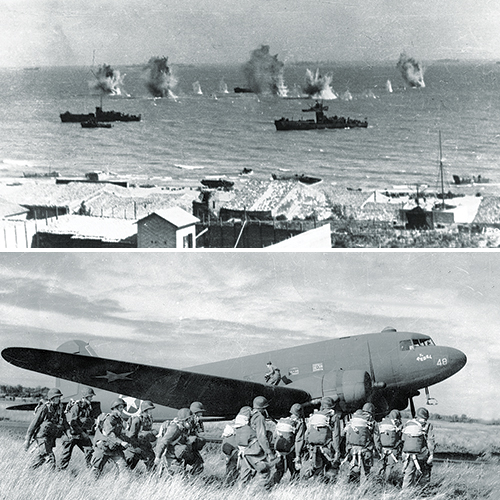
Launched on the night of July 9–10, 1943, Operation Husky, the invasion of Sicily, represented the Allies’ first step in reclaiming the continent from the Nazis. At the outset of the operation the Americans and British dropped airborne troops ahead of a massive predawn amphibious assault.
While the landings and airdrops went largely as planned, resistance was severe, and the pressure was on to maintain momentum. Patton, commanding the U.S. Seventh Army, wanted to push farther inland and instructed Ridgway to prepare reserve troops from the 504th Parachute Infantry Regiment to jump on the evening of July 11 to reinforce the center of the line. Earlier that day Patton alerted Maj. Gen. Omar Bradley, in command of II Corps, to notify all units—especially antiaircraft batteries—the airdrop had been scheduled.
The fighting was fierce that day. The German and Italian ground troops put up stiff resistance, while Axis aircraft flew hundreds of sorties against Allied positions. The continual strafing and bomb runs kept the American and British troops on edge. The U.S. beachhead at the port of Gela, astride the flight path for the incoming paratroopers, was under near-constant aerial attack into the evening. Increasingly apprehensive about the potential for friendly fire, Patton tried at 8 p.m. to postpone the airdrop. Unfortunately, his staff was unable to contact the airfield in Tunisia from which the 52nd Troop Carrier Wing transports carrying the 504th PIR had already departed.
As darkness settled over Sicily, German and Italian aircraft struck again, attacking Allied shipping off Gela. They broke off even as the 144 transports filled with some 2,000 American paratroopers were approaching the coast.
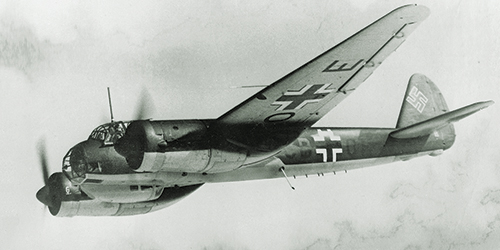
The first serials of C-47s and C-53s flew low over the beach and made their drops on the airfield at Farello without incident. Then something went horribly wrong. A nervous anti-aircraft gunner fired on one of the lumbering transports. All at once Allied batteries on land and sea followed suit, and planes began to drop from the sky.
It was a slaughter. The low-flying transports veered to evade flak, but there was little room to maneuver. The extremely accurate Allied fire tore apart the planes and the men inside. Six aircraft took direct hits and plunged to earth with all their paratroopers and crews aboard. Other paratroopers died when they jumped from their stricken planes but their chutes failed to open in time. Several transports crashed into the sea, the gunners on nearby ships continuing to blast away at the wreckage until realizing they were American aircraft. Boat crews picked up a handful of survivors.
One returning transport pilot remarked, “Evidently the safest place for us tonight while over Sicily would have been over enemy territory.”
On the ground at Farello, the generals were stunned by the disaster unfolding before their eyes. Patton kept repeating, “Oh, my God! Oh, my God!” Ridgway fought back tears. Bradley, watching from his nearby headquarters, was livid but also powerless to stop the carnage.
The human toll was staggering. The 504th PIR reported 81 dead, 131 wounded and 16 missing. The 52nd Troop Carrier Wing suffered seven dead, 30 wounded, and 53 missing and presumed dead. Fewer than 400 of the 2,000 paratroopers landed in the drop zone. Of the 144 aircraft used for the mission, 23 failed to return. Eight planes turned back without dropping paratroopers. Thirty-seven of those that did make it back were riddled with holes.
An investigation into the incident was inconclusive. It was unclear who fired first or why the firing started at all. Some noted the mission flight path had taken the transports over 35 miles of active battlefront. Others speculated aircraft may have veered slightly off course. For their part, gun crews at many of the naval and ground anti-aircraft batteries insisted they’d never received word an airdrop was scheduled. Such factors, combined with the successive Axis aerial attacks on Allied positions that day, created a recipe for disaster.
As upset as he was, Ridgway later conceded little could have been done to avoid the catastrophe. “Deplorable as is the loss of life which occurred, I believe that the lessons now learned could have been driven home in no other way, and that these lessons provide a sound basis for the belief that recurrences can be avoided,” he wrote three weeks after the incident.
‘The object of this memorandum is to prescribe the distinctive markings which will be applied to U.S. and British aircraft in order to make them more easily identified as friendly by ground and naval forces and by other friendly aircraft’
Following the investigation, SHAEF acted to avoid future tragedies. Gun crews received additional training to identify friendly aircraft from foe. Protocols for communication among air, land and sea units were reviewed and revised. And the impetus to add distinctive markings to aircraft was ratcheted up.
“Immediately after Sicily they developed a stripe system for aircraft transporting material from Tunisia to Italy,” says Larry Decuers, curator of the National WWII Museum in New Orleans and a former infantryman in the 101st Airborne Division. “That incident is the reason why the order for special markings was given for D-Day.”
The first field test for invasion stripes came in August 1943 during Operation Starkey, a deception scheme by the Allies in the Pas-de-Calais region of France designed to convince the Germans an invasion was imminent. For three weeks American and British bombers hammered targets on the ground as landing craft assembled along the Dover coast, hoping to lure out and destroy the Luftwaffe. The Germans never really took the bait.
For that operation Allied aircraft were painted with alternating stripes—two black and two white—around the wings. Tested by the British during training exercises, the markings at least proved successful.
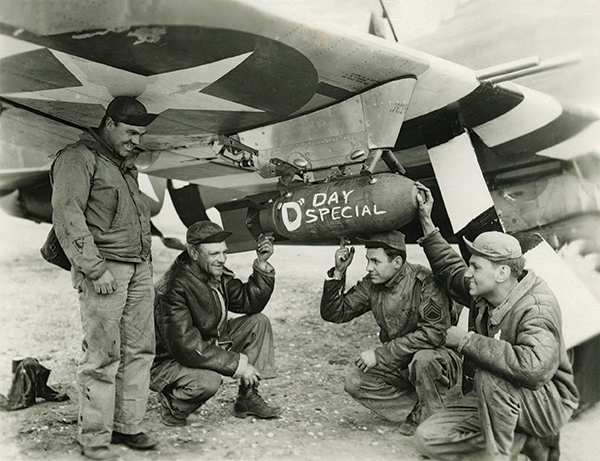
In the run-up to D-Day an order came down regarding the use and application of invasion stripes. Issued by SHAEF on April 18, Operation Memorandum No. 23, titled “Distinctive Marking—Aircraft,” opened with the following:
The object of this memorandum is to prescribe the distinctive markings which will be applied to U.S. and British aircraft in order to make them more easily identified as friendly by ground and naval forces and by other friendly aircraft.
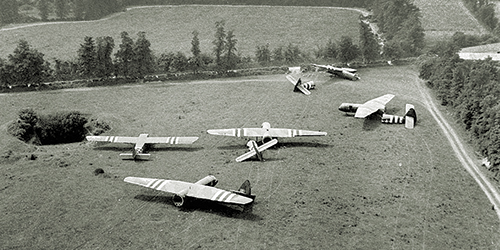
The order specified a different configuration than that used during Starkey. The Overlord markings comprised five alternating stripes—three white and two black, each 18 inches wide—around the wings and the fuselage just forward of the tailplane. Specific instructions addressed each type of aircraft and which classes were exempt, including the four-engine bombers, night fighters, gliders and seaplanes. (Later directives added the gliders and their tow planes to the list of British and American aircraft slated to carry the markings.) SHAEF issued only 100 copies of the top-secret memo. Fifty-five were sent to the relevant commands, while the remaining 45 were kept as spares. The logistics of painting more than 6,000 combat aircraft within a matter of hours had been set in motion.
The Allies were already using IFF (Identification, Friend or Foe) systems on many planes. IFF features a transponder that listens for an interrogation signal, then broadcasts a response to receivers on the ground and at sea, indicating the aircraft is friendly. Given the sheer number of planes that would be in the skies over Normandy, however, there was justifiable concern the rudimentary system would be overwhelmed.
Supreme Allied Commander Gen. Dwight D. Eisenhower had tentatively scheduled D-Day for June 5, thus the painting orders came down the evening of June 3. The following night, after planes had returned from their daylight missions, Allied military authorities locked down every airfield in Britain, confined troops to base and ordered ground crews to begin painting all aircraft specified in Memorandum 23. Time was short. Fortunately, foul weather delayed the invasion by a day, giving crews an additional 24 hours to finish their work.
“It would have been a mad dash to get everything painted,” Decuers says.
But paint they did, working around the clock to accomplish their artistic endeavors. Given the rush job, many stripes were not as straight as they might have been, drips were not uncommon, and undoubtedly some planes took off with wet paint. Yet virtually all designated aircraft were painted in time—if just barely.
Allied military authorities locked down every airfield in Britain, confined troops to base and ordered ground crews to begin painting all aircraft specified in Memorandum 23
“The preparation for painting all those airplanes took months,” notes author and historian Bell. “I imagine the discussion between base officer and crew chief went something like this: ‘At some point in the near future you’re going to have to apply a lot of paint. I need you to be ready.’”
Remarkably, the Germans never got wind of the markings. In one near slipup hours before the invasion date changed to June 6, a flight of Consolidated B-24 Liberator bombers set out for Normandy accompanied by a squadron of P-51s bearing invasion stripes. However, the weather closed in so quickly that the run was scrapped, and all planes returned to base. Presumably no Luftwaffe pilots noticed or reported the new design.
In the postwar period the story of the invasion stripes assumed legendary proportions. Indeed, it was an incredible undertaking, given the logistical constraints and tight timetable, so the opportunity to embellish the story on each retelling was tempting.
Contrary to popular belief, the Allies did not run out of white paint. Though not told why, ground crews had been ordered weeks in advance to stock up on both white and black paint. While it’s entirely possible a few bases ran out of paint and had to acquire some locally, such instances would have been the rare exception. Wherever supplies of black paint ran low, crews simply mixed darker shades of paint to achieve something as close to black as possible.
There is also an unsubstantiated rumor that the “Filthy Thirteen”—the 1st Demolition Section of the Regimental Headquarters Company of the 506th Parachute Infantry Regiment, 101st Airborne Division—used paint from still-wet invasion stripes to mark their faces before jumping into Normandy. Photos of the Mohawk-wearing paratroopers smearing on war paint captured the nation’s attention, but they likely used paint from other sources.
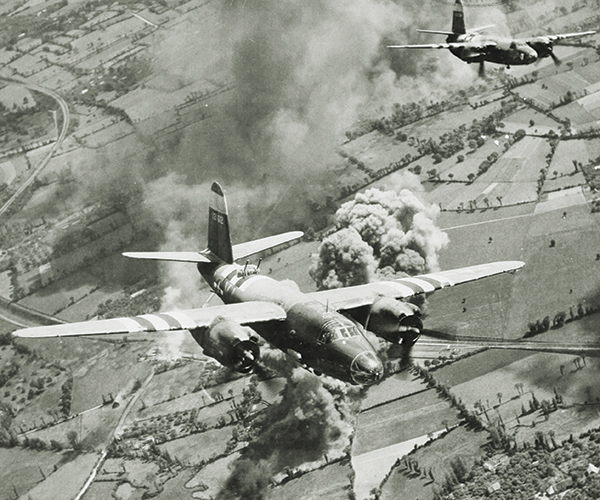
How effective were invasion stripes? Actual numbers of friendly fire incidents seem nonexistent. Regardless, few Allied aircraft were lost on D-Day. Of the 14,674 sorties flown, only 127 planes failed to return to base—less than 1 percent (by comparison, the Eighth Air Force lost nearly 4 percent of its bombers per mission over Europe). Causes for the D-Day losses ranged from enemy anti-aircraft fire to mechanical issues, weather and human error. Still, one can’t entirely rule out friendly fire.
“I believe invasion stripes helped, but they didn’t eliminate the problem,” Bell says. “You couldn’t always tell if an airplane had stripes on it. When you’re in combat, every bit of juice in your system is amped up. I’m not blaming anyone, but if you’re on the ground and you see an airplane, you want to shoot it down. It still goes on today.”
The Allies had expected major pushback from the Luftwaffe on D-Day. However, very few German planes took to the air during Operation Overlord. That’s a credit both to Allied air supremacy and the fact many enemy fighter groups had been relocated from France to Germany to counter day and night bombing missions against strategic targets in the fatherland.
it was an incredible undertaking, given the logistical constraints and tight timetable
Bud Anderson flew the longest mission of his life on June 6, 1944. He was nearly seven hours in the air struggling through heavy cloud cover. If the massive armada was below him, he couldn’t tell. “I couldn’t see a thing,” he recalls. “I followed the lead plane in our flight by watching the blue flame from his exhaust.” He adds, “I thought the stripes were a great idea.”
While the markings likely helped reduce the incidence of friendly fire, other factors certainly made a difference. Improved aircraft identification training, better command and control, coordinated communications and general awareness of the risks all had an impact on preventing amicicide on D-Day.
The paratroopers and aircrews killed or wounded in the skies over Sicily also helped prevent what could have been a far greater disaster in the skies over Normandy. They did not die in vain. MH
Journalist and freelance writer Dave Kindy is a frequent contributor to Military History. He lives in Plymouth, Mass. For further reading he recommends To Fly and Fight: Memoirs of a Triple Ace, by Col. Clarence E. “Bud” Anderson; Assault on Sicily, by Ken Ford; and To War With the Yoxford Boys: The Complete Story of the 357th Fighter Group, by Master Sgt. Merle C. Olmsted. This article was published in the July 2020 issue of Military History.

